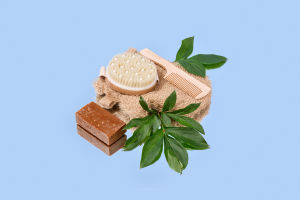Having fresh plants in your home can be a wonderful addition as it enhances the aesthetics of your interiors while making the air fresher. With a little bit of creativity, houseplants can also infuse your home with a sense of liveliness and vitality.
Moreover, there are many benefits to keeping plants in your home, such as purifying the air and reducing stress levels. Here are some of the most common benefits of having houseplants in your home:
1. Improving air quality: Potted plants are known to absorb harmful substances such as formaldehyde, benzene, and carbon dioxide and release oxygen, thereby improving the air quality indoors.
2. Reducing stress: Research indicates that a room with potted plants can help people reduce stress, and lower heart rate and blood pressure compared to a room without plants.
3. Enhancing interior aesthetics: Potted plants can bring in a natural and warm feeling, increasing the aesthetic and life interest of the interior.
When it comes to growing plants indoors, there are many different types of potted plants that are suitable for your home environment. Here are a few common potted plants that you can consider:
Money Tree: The Money Tree is an ornamental plant that is highly tolerant to shade and drought. It has expanded tubers at the bottom of the stem that stores water. Money trees usually need to be watered once in 20 to 30 days. If there is dust on the leaves, simply spray water to clean them.
Chlorophytum: Chlorophytum, which comes in different varieties, has green leaves mixed with other colors and is very popular among people. It can be placed in an indoor pot as an ornamental plant and can also absorb toxic gases.
Gardenia: Gardenia has a charming aroma, and the white flowers are beautiful against the bright green leaves. The height of the plant can be kept between 100-200 cm, making it suitable for decoration in the home. Additionally, gardenia is resistant to sulfur dioxide and can purify the air.
Cactus: Cacti are one of the best plants to grow indoors as they can adapt to the temperature and humidity of the house and require very little water. They come in various shapes and colors and can add some interesting elements to your interior settings. However, note that cacti need full sun, so it's best to place them near a window or on a balcony.
Ivy: Ivy is an easy-to-grow plant that can adapt to indoor temperature and humidity. Its foliage comes in dark green or purple, adding a natural element to any indoor setting. Ivy requires moderate light, so avoid exposing it to strong sunlight.
Pothos: The pothos is a very easy-to-grow plant that can adapt to indoor temperature and humidity. Its leaves are dark green and can grow very long. Pothos require moderate light, so do not expose them to strong sunlight.
Lavender: Lavender is a great plant to have in the bedroom as it can help relieve stress and promote sleep. Its flowers are beautiful in lavender or light pink. Lavender needs full sun, so it's best to keep them in a sunny spot.
There are many different types of potted plants that you can consider growing in your home. Choosing plants that suit your home environment and personal interests can make the atmosphere in your home more comfortable and natural.
Additionally, it is essential to pay attention to the requirements of light, temperature, humidity, and watering of plants to ensure their healthy growth. By following these tips, you can enjoy the many benefits of houseplants in your home.


